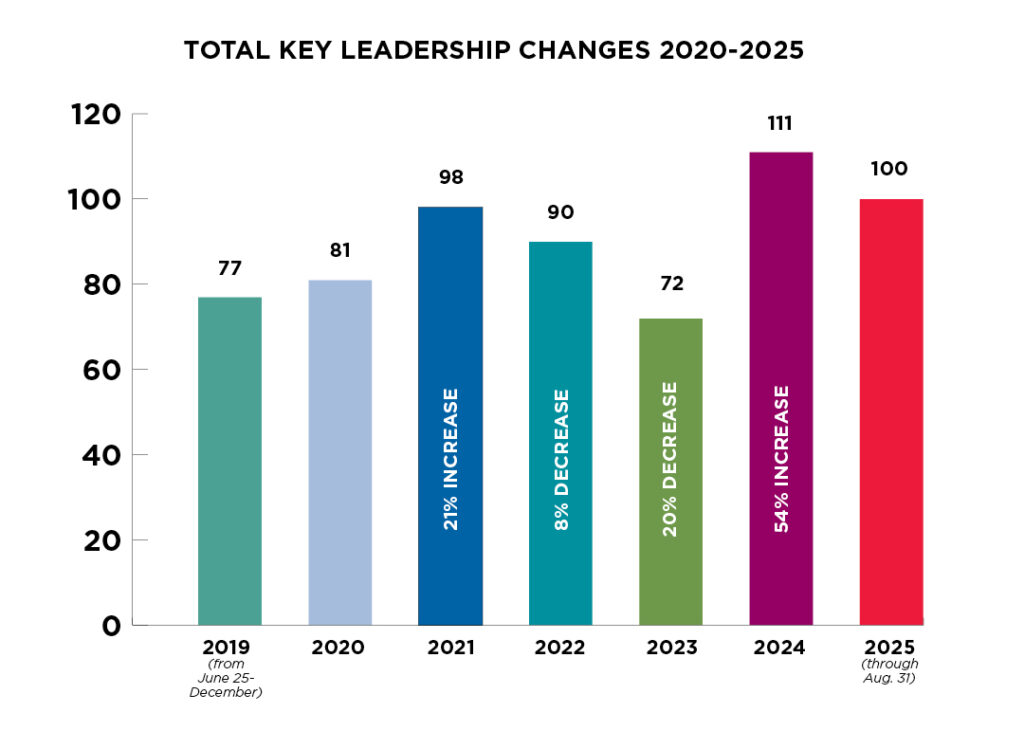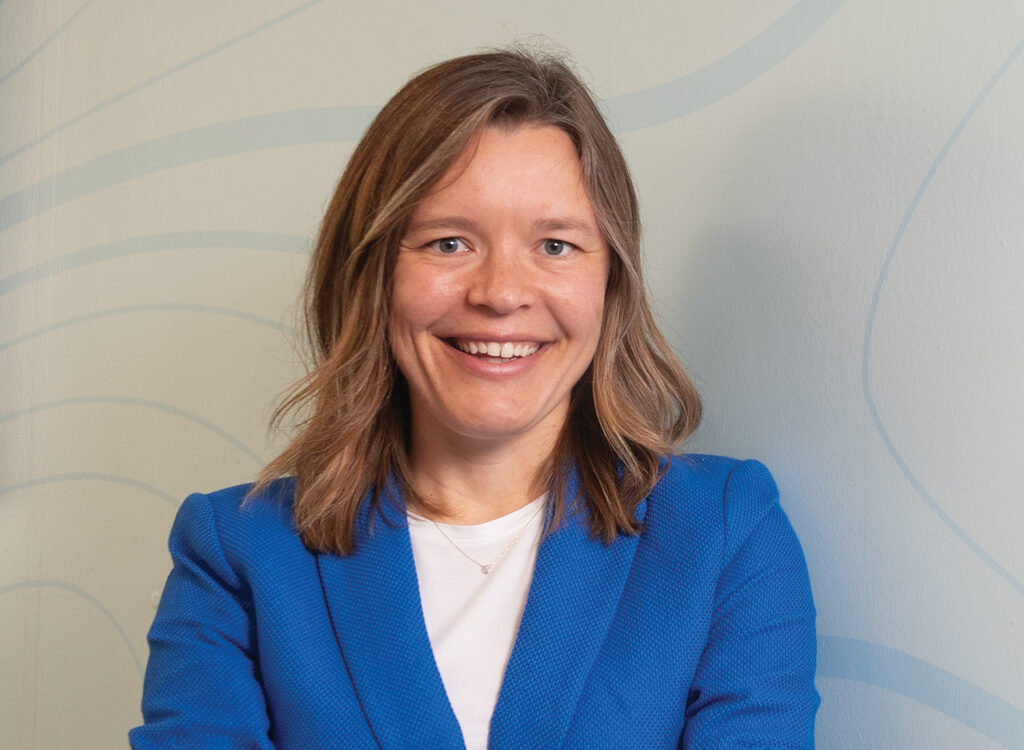A Closer Look: Jim Register
Take a closer look at the new president and CEO of Iowa Innovation Corp.

KATE HAYDEN Dec 26, 2018 | 5:19 pm
7 min read time
1,756 wordsBusiness Record Insider, Innovation and EntrepreneurshipFor all those who are curious about the new president and CEO of Iowa Innovation Corp., Jim Register is trying to make connections as quickly as he can among the organization’s longtime and developing partner entities.
Register’s first day in October marked the corporation’s new focus as the newly designated home of the Iowa Bioscience Center. The corporation in the past has led local efforts related to the federal Small Business Innovation Research (SBIR)/Small Business Technology Transfer (STTR) program, which it will continue efforts in.
Through the Iowa Bioscience Center, IICorp is laying groundwork for future business development in four focus industries: biobased chemicals, precision and digital agriculture, vaccines and immunotherapeutics, and medical devices.
Register’s professional background began in a cancer research center on genetic recombination in bacteria, where he developed a procedural method explaining his job to family and friends.
“I could go through what I often will refer to as the nine-step process to go from what I was doing to something that they would recognize. And I began to realize that I’d like to be closer than nine steps from something that could be applied,” Register said.
Register shifted his graduate work to focus on genetically modified, virus-resistant plants.
“It got me familiar with what was going on,” Register said. “I began to see what research in industry was like in addition to academia, and so after that, my career has been in research with industry.”
Register joined Pioneer Hi-Bred International (now Corteva Agriscience) in the 1990s developing a career marked by agribusiness leadership roles in the company. Register left in early 2016, spending some time as an independent consultant before joining the Iowa Innovation Corp. as CEO and president.
What attracted you to this role?
For the amount of [research and development] going on, and the amount of innovation taking place at the major research universities in the state … Outside of those large companies, there’s not a lot of economic value coming out of the biosciences — whether you look at it on a per capita basis, or whether you look at it in comparison with surrounding states. So the Iowa Economic Development Authority, though their Iowa Innovation Council, commissioned a study, which was really an update of some previous work that a consultant had done for them assessing the situation and proposing how this could be addressed.
A lot of the elements that one would want to have in place to have a healthy bioscience ecosystem in the state were there, but they were extremely distributed and not working together. A key output from that report was, somebody has to own this area.
I have a good appreciation and understanding of what it takes to take concepts, take discoveries and actually turn them into products. And so, given that background, as I looked at the gaps that have been identified, I thought not only was this a decent fit, but it also had the potential to really capitalize on a number of things that I’ve done.
Iowa’s a small enough state [that] the amount of resources that are going into this are going to be proportionally sized. You can’t try and do everything — if you try and do everything, you’ll succeed at nothing.
What are the immediate changes Iowa Innovation Corp. is going through?
Right now, we are retaining the name Iowa Innovation Corp. … We’re referring to ourselves as the home of the Iowa Bioscience Development Center. There will be some proposed code going before the legislature that will make it easier for us to change our name in the future if we choose to do that, but we don’t have any plans to do that right now.
The [Iowa] Innovation Corp. basically has two missions going forward. One would be to fulfill the objectives … that are laid out for the Iowa Bioscience Development Center [the industries: bio-based chemicals, precision and digital agriculture, vaccines and immunotherapeutics, and medical devices]. The one element of the Innovation Corp. that has been held on to from the previous direction is the SBIR/STTR, our support that Anne [Price] heads up. That will continue to be part of our mission. The support that we give in that area will not focus only on the four platform areas, so that will continue to broader innovation/entrepreneurial support.
We’re spending a lot of time right now working with folks at Iowa State University as well as the University of Iowa, because … they’re one of our closest partners in terms of stimulating creation and innovation. We have some plans to grow the Innovation Corp. a bit, but there are no plans to make it a large organization. Instead, we will look to leverage organizations like the Cultivation Corridor or various accelerators that exist, rather than trying to duplicate those sorts of skills, capacity and resources that already exist. Same thing with the universities — we are collaborating very closely with them, and they are putting in, in the next legislative cycle, a request for significant funding at the universities to be aligned and address these bioscience platforms [$1 million per platform, or $4 million total, per year].
The governance of how that money is spent will not reside solely within the universities. We’ll have an equal say of how that works, and that’s a pretty different way of working. But those sorts of partnerships have to be put in place if we’re going to be successful.
One of the areas that medium- to long-term will be very central for us will be partnering with industry and existing companies as well as with the investor community. We need to have a better plan developed and laid out with the universities, and I need to have a better understanding of what innovations are in the pipeline before I feel like I’m really well-positioned to get into these other conversations. A lot of the time so far has been spent getting my arms around who all is doing what, you know, across the existing partners — whether that be groups with more of a marketing-education focus, lobbying, people who are running different accelerators, incubators.
What advice or feedback have you found helpful since beginning at IICorp?
The biggest thing, and I wouldn’t say I’ve really had an opportunity to exercise this yet, but it’s very easy to see how I will — don’t be worried about whatever’s been done before. A part of this redirection of the Iowa Innovation Corp., as well as this focus on economic development in these four bioscience areas — both of those are kind of a fresh start, you know, it’s a clean slate. Trying to look at what might have been done before may have its role, but it’s not a very big part of what we’ll be doing moving forward.
What would you like to see IICorp look like in a year?
I think in a year, we should have increased our staff to where we want to be. I’ve mentioned the university request that’s going for funding — one of the things that we will look to do is hire one position to be associated with each of these platform areas. That role will be to serve as a technology scout back into the universities, as well as other places in the state, and to help bring technologies to us for joint discussion.
I will hire people who will be partnered with those folks, but who will bring in more of a business development expertise so that … the folks in my group can focus more on the business development aspect, working with the investor community, working with people that can help make sure they’ve got good business plans in place, addressing the needs that they might have in terms of putting together leadership teams. … Also, working with them to define situations where licensing technologies as opposed to trying to form a company around it might be the best path forward.
So a year from now that staff should be in place, and although we will never be done scouting and vetting opportunities, I hope that [we’ll be] through the first round of doing that, and [will have] identified at least a few opportunities that look worth putting some ongoing effort and focus into. … We’ll learn by doing exactly what’s needed. It’s one thing to talk about it in theory ahead of time, it’s another to actually get into it.
This is not going to be something where we’re going to have success overnight. When you look at timelines for development of products in these areas, we’re not looking at two to four years. In a lot of cases you’re looking at a decade or more. The ultimate fruits of this effort in terms of jobs created, revenue in the state, a lot of that will take quite a while to develop. That’s another reason … we maybe haven’t had as much success in this area historically as one might think when you look at all the relevant [research and development] going on in these areas. Timelines for development are very long, many of the areas that we’re talking about also are in regulated industries, whether that’s in animal health, human health. Depending on what’s done, some of the plant/agricultural fields as well can involve regulations, and all that increases costs. So you’ve got long timelines, it can be fairly expensive. Those aren’t characteristics of investment in a state that you see a lot of.
What have you been reading/watching/listening to?
A field that I wish had existed when I was an undergrad and then in grad school [was] behavioral economics. I think it’s really, really fascinating to look at all of the ways in which the classic theory of how people make decisions is fundamentally wrong. Trying to improve upon the understanding of how people make decisions by actually factoring in how people make decisions, as opposed to just assuming, you know, it will all be completely logical.
So whether it’s reading about it in books by folks like Daniel Kahneman or Richard Thaler, or some of the more popular stuff like [podcast and newsletter] “Freakonomics,” I find that very, very interesting. The other author I’ve found recently that I enjoyed, is Walter Isaacson, who’s done a lot of biographies on innovators and the challenges they faced, you know — how innovation takes place, what sort of innovation can be ascribed to individuals versus, you know, people who actually take ideas and do something with them.










